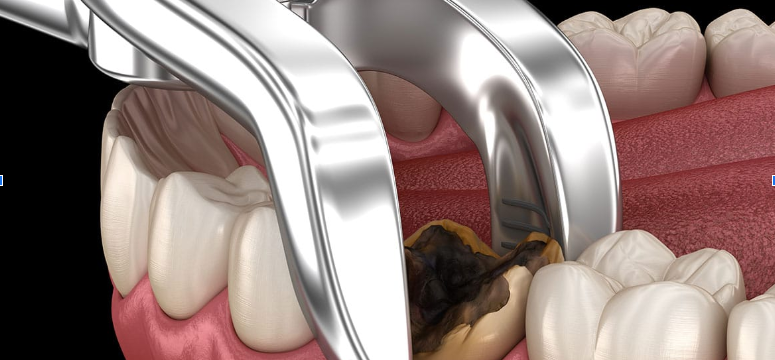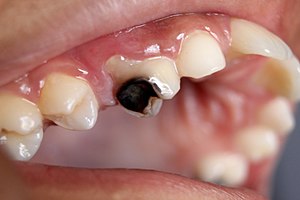
Recovering from multiple tooth extractions usually takes about one to two weeks for the initial phase, though complete healing may take several months. Factors like your age, health, and the number of extractions can influence your multiple tooth extraction recovery time. This article will help you understand what to expect during your recovery and how to manage it effectively.
Key Takeaways
- Recovery time varies for multiple tooth extractions, typically lasting one to two weeks for initial healing, while complete recovery may take several months.
- Post-extraction care includes managing pain and swelling with ice packs and pain relievers, as well as following a soft diet and avoiding strenuous activities to prevent complications.
- Recognizing signs of complications, such as infection or dry socket, is essential for a smoother recovery, and attending follow-up appointments is crucial for monitoring healing progress.
Understanding Multiple Tooth Extraction Recovery Time
 The healing time after multiple tooth extractions can vary widely among individuals. Factors such as age, overall health, and the number of teeth removed play significant roles in determining how quickly you recover. Typically, you can expect the initial recovery phase to last about one to two weeks. However, complete healing could take several months, depending on your body’s response to the surgery.
The healing time after multiple tooth extractions can vary widely among individuals. Factors such as age, overall health, and the number of teeth removed play significant roles in determining how quickly you recover. Typically, you can expect the initial recovery phase to last about one to two weeks. However, complete healing could take several months, depending on your body’s response to the surgery.
Following your dentist’s care instructions meticulously is essential. Special care measures, such as rinsing with saltwater and avoiding rigorous activities, are crucial for a smooth recovery. Your body needs time to heal, and skipping these steps could prolong the process.
A key factor in the recovery timeline is the avoidance of smoking. Smoking can delay healing and increase the risk of complications, so it’s critical to avoid smoking for at least five days post-surgery. Your dedication to these guidelines can significantly impact your overall healing process.
Immediate Aftercare for Multiple Tooth Extractions

Hydration is another critical factor. Drinking at least six glasses of liquid on the first day helps replace the fluids lost during the extractions. However, avoid rinsing your mouth on the first day to prevent dislodging any blood clots that are essential for healing.
Avoid actions that could disturb the extraction site, such as sucking through a straw or smoking, as these can dislodge blood clots and delay healing. Drinking through a straw should be avoided for at least a week to ensure the blood clots remain intact.
By following these immediate aftercare tips, you can significantly reduce the risk of complications and set yourself up for a smoother recovery journey, completing the action.
Managing Pain and Swelling
Pain and swelling are common after multiple tooth extractions, but there are effective ways to manage them. Using ice packs on the cheek above the extraction site can help minimize swelling and numb the area, providing some immediate relief. Over-the-counter NSAIDs like ibuprofen or naproxen are also excellent for alleviating pain and reducing inflammation.
Swelling typically peaks around the third or fourth day post-extraction, so careful management in the initial days is crucial. Avoiding vigorous exercise for at least a week post-surgery is essential because increased blood pressure can lead to more swelling and pain.
Managing pain and swelling effectively is key to a smooth recovery. Adhering to these guidelines ensures a more comfortable healing process.
Diet Recommendations Post-Extraction
Maintaining a soft and high-protein diet is crucial for tissue healing and recovery after multiple extractions. Soft foods like applesauce, yogurt, well-cooked vegetables, and mashed potatoes are highly recommended. Smoothies can also be a great option, but make sure they are free of seeds to avoid irritating the extraction site.
Avoid spicy and acidic foods as they can irritate healing gums. Following these dietary recommendations can significantly speed up recovery and ensure proper healing.
Physical Activity Restrictions
Limiting physical activity helps prevent increased swelling and bleeding after multiple tooth extractions. Patients should reduce physical activity for at least a week post-procedure.
After the first week, you can gradually resume activities like jogging or tennis. However, even as you return to your normal routine, it’s essential to allow additional time for your mouth to fully heal.
Following these physical activity restrictions ensures a smoother recovery without complications.
Recognizing Complications
Recognizing potential complications is vital for a smooth recovery. Signs of infection include increased swelling, redness, pus discharge, or fever. While a slight temperature increase is normal for 24 to 48 hours post-procedure, any persistent fever should be reported to your dentist.
Excessive bleeding beyond the expected timeframe after extraction may indicate a problem that requires professional intervention. Additionally, a bad taste or odor in the mouth several days post-extraction may suggest an infection or the presence of a dry socket.
Maintaining the integrity of blood clots at the extraction site prevents complications like dry socket, which occurs when the blood clot is dislodged, exposing bone and nerves, leading to severe pain. Persistent numbness in the lips, tongue, or chin after extraction may indicate potential nerve damage and should be addressed by a professional immediately.
Long-term Healing Process
The long-term healing process after tooth extractions can extend over several months. While the socket typically heals within three weeks, complete recovery may take much longer. Most patients can return to a normal diet and routine within 7 to 10 days, depending on their recovery rate.
Dry socket is a common complication that can occur when a blood clot fails to form or is lost after extraction. Symptoms include severe pain, visible bone in the socket, and a foul odor in the mouth.
Severe, unrelenting pain or worsening swelling after the initial 48 hours often indicates an infection or other complications that require dental attention.
Preparing for Follow-Up Appointments
Attending follow-up appointments is crucial to ensure the extraction site heals correctly and to prevent potential complications. During these visits, your dentist can evaluate your healing progress and verify necessary adjustments to your treatment plan, completing the oral surgery process effectively.
Follow-up appointments also provide an opportunity to discuss any recovery concerns with your dentist. Consistently attending scheduled follow-up appointments can significantly lower the risk of long-term oral health issues and strengthen the connection to better overall health.
Paying for Multiple Tooth Extractions

Financing options such as medical credit cards, dental savings plans, or flexible spending accounts can help manage the costs of tooth extractions. Some dentists offer in-house financing, allowing patients to pay over time for their dental care with minimal or no interest. Negotiating a payment plan directly with the dentist can also make dental procedures more financially feasible.
Summary
In summary, recovering from multiple tooth extractions requires careful attention to immediate aftercare, pain and swelling management, diet, physical activity restrictions, and recognizing complications. Following these steps can significantly improve your recovery process and ensure a smooth healing journey.
Remember to attend follow-up appointments and explore payment options if needed. With proper care and attention, you’ll be well on your way to a successful recovery.
Frequently Asked Questions
How long does pain last after tooth extraction?
Pain after tooth extraction typically lasts for about three days, with a gradual decline in discomfort. However, it’s important to monitor the area as it may take weeks or months for complete healing.
What to expect after all teeth are extracted?
After all teeth are extracted, it’s common to experience mild discomfort such as sore throat, earache, or flu-like symptoms in the days following the procedure. Additionally, ensure to keep your lips moisturized to prevent cracking.
How long does it take to recover from multiple tooth extractions?
Recovering from multiple tooth extractions usually takes about one to two weeks for initial healing, while complete recovery may take several months. It’s important to follow your dentist’s aftercare instructions for the best outcome.
What should I avoid doing immediately after multiple tooth extractions?
You should avoid rinsing your mouth, using a straw, and smoking after multiple tooth extractions to prevent dislodging blood clots, which can impede healing. Prioritizing these precautions is essential for a smooth recovery.
How can I manage pain and swelling after tooth extractions?
To effectively manage pain and swelling after tooth extractions, apply ice packs, take NSAIDs, and refrain from vigorous exercise. Following these steps will help ensure a smoother recovery.
